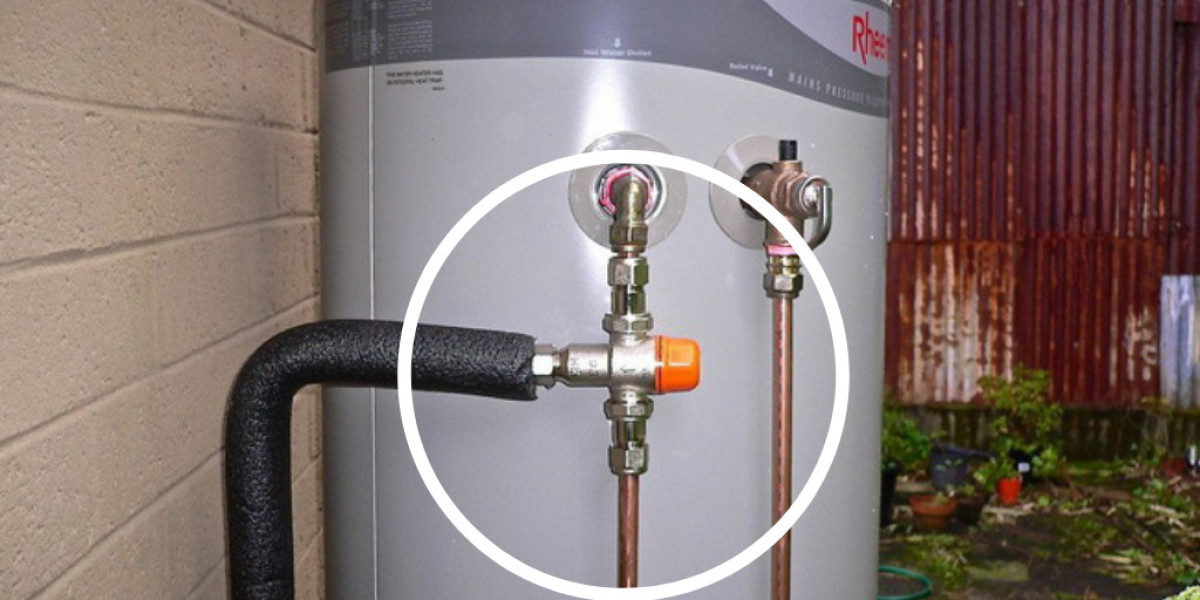When it comes to household hot water safety, efficiency, and compliance with regulations, tempering valves play an essential role. Many homeowners are unaware of what a tempering valve does until they face issues with inconsistent water temperature, scalding risks, or plumbing code requirements. Professional plumbers consistently recommend installing tempering valves for all types of hot water systems — whether it’s electric, gas, solar, or heat pump — because they ensure safety, improve system performance, and meet legal standards.
What Is a Tempering Valve?
A tempering valve is a plumbing device designed to control and maintain a safe water temperature by mixing hot water from the system with cold water before it reaches your taps. Typically, hot water systems heat water up to 70°C or higher to prevent bacterial growth such as Legionella. However, water at this temperature can cause severe burns in just a few seconds.
A tempering valve reduces the delivery temperature to around 50°C, which is considered safe for household use, especially in bathrooms and kitchens. This simple device acts as a barrier between extremely hot water and your family’s daily activities.
Why Do Plumbers Recommend Tempering Valves?
1. Safety Against Scalding
One of the primary reasons plumbers recommend tempering valves is protection against accidental burns. Children, elderly family members, and people with limited mobility are particularly vulnerable to scald injuries. By regulating water temperature, tempering valves drastically reduce the risk of burns from unexpectedly hot water.
2. Compliance With Plumbing Regulations
In many regions, including Australia, plumbing codes mandate tempering valves in new hot water installations and major replacements. Professional plumbers are legally obliged to ensure hot water systems meet these requirements. Installing a tempering valve keeps your property compliant with safety regulations and avoids potential fines or rework.
3. Consistent Water Temperature
No one likes sudden bursts of hot or cold water while showering. A tempering valve ensures a steady, reliable flow at a preset temperature, even if the water pressure changes or multiple taps are used simultaneously. This consistency improves comfort and reduces unnecessary water waste while adjusting taps.
4. Extended Hot Water System Life
By preventing extreme temperature fluctuations, a tempering valve can reduce strain on your hot water system, pipes, and fixtures. Maintaining balanced water temperatures helps prevent corrosion, scale buildup, and excessive wear, potentially extending the life of your entire plumbing system.
5. Energy Efficiency Benefits
Although tempering valves primarily focus on safety, they can also help with energy management. When water is delivered at the correct temperature, there’s no need to constantly add cold water at the tap to cool it down, resulting in more efficient use of your hot water system.
Where Are Tempering Valves Used?
Plumbers install tempering valves in a variety of hot water systems, including:
Electric or Gas Storage Systems – Standard household hot water tanks.
Solar Hot Water Systems – Systems that may overheat on sunny days.
Heat Pump Systems – Energy-efficient units that also require regulated output.
Commercial Applications – Childcare centers, nursing homes, and gyms must comply with stricter safety rules, making tempering valves essential.
How Do You Know If Your Tempering Valve Needs Servicing?
Like any mechanical device, tempering valves require maintenance to ensure proper function. Watch for these common warning signs:
Fluctuating Water Temperature – If your water suddenly turns too hot or too cold, the valve may be failing.
Reduced Water Pressure – A blocked or worn valve can restrict flow.
Visible Leaks – Any leak around the valve area indicates it may need repair or replacement.
System Age – Most tempering valves last 5–8 years depending on water quality and system use.
Plumbers recommend routine inspections during annual hot water system servicing to ensure the valve is still operating safely and efficiently.
DIY vs. Professional Installation – Why Plumbers Are Essential
While some homeowners are tempted to handle plumbing tasks themselves, tempering valve installation is best left to licensed plumbers. Incorrect installation can result in unsafe water temperatures, voided warranties, and non-compliance with regulations. A qualified plumber will:
Select the right type of valve for your system.
Correctly calibrate the temperature settings.
Ensure all fittings are leak-free and up to code.
Provide certification if required by law.
The small upfront cost of professional installation is well worth the peace of mind and safety it provides.
Key Takeaways
Tempering valves are vital for hot water safety, reducing the risk of burns.
They are legally required in most modern plumbing installations.
Valves help maintain consistent water temperatures and protect your hot water system.
Regular servicing ensures continued performance and compliance.
Always use a licensed plumber for installation or replacement.
Final Thoughts
Whether you’re replacing your hot water system or simply upgrading your plumbing, installing a tempering valve is one of the smartest decisions you can make for your home. It’s a small device with big benefits — safeguarding your family, meeting legal standards, and ensuring comfortable, efficient hot water delivery. That’s why plumbers across the industry unanimously recommend tempering valves for every hot water system.








